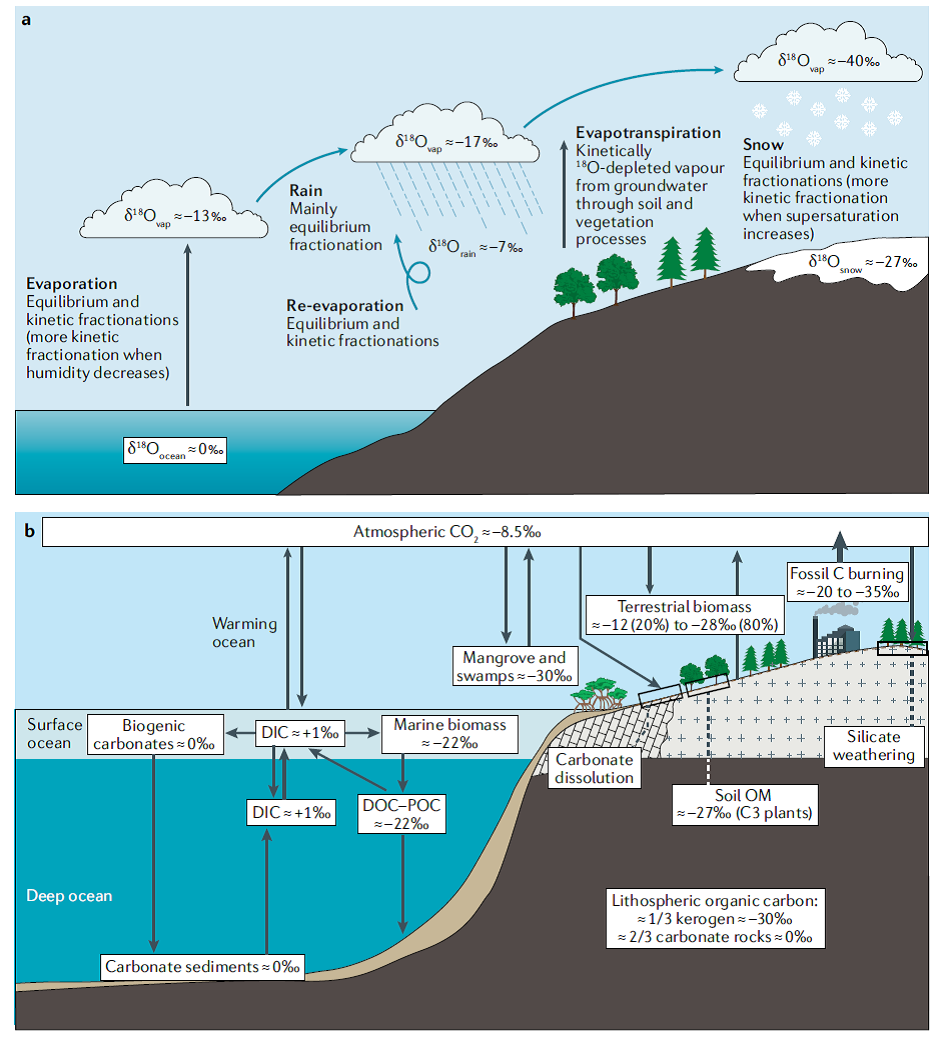
Fig. isotopes in the water and carbon cycles. a- The main isotope fractionation processes within the water cycle. b- Major elements governing the 13C content of the Earth’s surface carbon. δ13C mean values (versus VPDB) are indicated in each box.
Stable isotopes of hydrogen, carbon and oxygen are used to investigate numerous physical and chemical processes in the water and inorganic carbon cycles. Measuring and comparing natural isotopic variations requires reliable primary reference materials and consistent data treatment. However, these reference materials have changed over time, while advances in technology have led to better constrained isotopic compositions of the reference materials. In this Technical Review, we provide an overview of the historical evolution of such materials, and explain their relationships across time and isotopic scales. Recommendations are provided for the measurement and reporting of isotopic compositions against the consensual VPDB and VSMOW scales in light of the newest carbonate and water reference materials distributed by the International Atomic Energy Agency. Stable isotope fractionation factors and their temperature dependence in processes specific to the water cycle (2H, 18O, 17O) and the CO2–water–carbonate system (13C, 18O) are described, including for carbonate clumped isotope thermometry.
Propagation of errors is also addressed for a consistent reporting of real uncertainties of isotopic measurements and calculations. Lastly, current gaps in knowledge on the behaviour of stable isotopes in the water cycle and the CO2–water–carbonate system are highlighted for future studies.
Auteurs: Claude Hillaire-Marcel, Sang-Tae Kim, Amaëlle Landais, Prosenjit Ghosh, Sergey Assonov, Christophe Lécuyer, Marc Blanchard, Harro A. J. Meijer and Hans Christian Steen- Larsen






